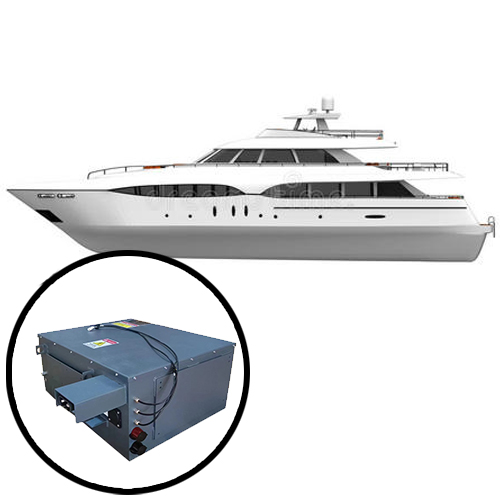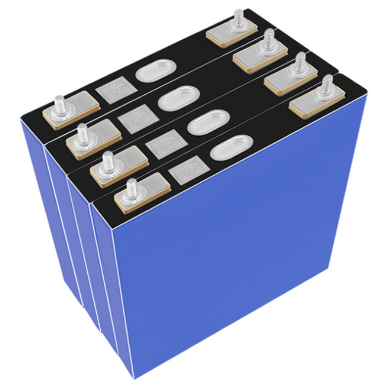El mejor carrito de golf del 2024 | Lista de los 5 mejores
Jun 24, 2024
¡Se acaba de presentar la lista de los mejores carritos de golf para 2024! Después de un extenso proceso de investigación de dos meses, finalmente recopilamos los resultados. Para garantizar evaluaciones integrales, entablamos conversaciones mensuales con miles de clientes para recopilar comentarios sobre varias marcas y modelos de carritos de golf. Reconociendo que las llamadas telefónicas por sí solas son insuficientes, también distribuimos encuestas a nuestros estimados clientes y realizamos pruebas en nuevos modelos de carritos de golf en la sede de BSLBATT USA en Texas, utilizando carritos de tienda. Combinando estos valiosos comentarios con la experiencia de nuestros especialistas internos en carritos de golf, hemos identificado los mejores carritos de golf del año. Se han contado los votos y los datos se han recopilado meticulosamente. Sin más preámbulos, aquí tienes los 10 mejores carritos de golf para 2024.Si busca análisis detallados de los carritos de golf que aparecen en nuestra lista, reseñas de productos de baterías de litio, consejos para el mantenimiento de carritos de golf, artículos informativos y más, ha venido al lugar correcto. Confiamos en que nuestra lista de 2024 le ayudará a tomar una decisión informada sobre la compra de su carrito de golf para el próximo año. ¡Vamos a sumergirnos!¿Qué distingue a un carrito de golf extraordinario?A la hora de evaluar las mejores marcas de carritos de golf de 2024, entran en juego varios factores clave. Un excelente carrito de golf debe presentar durabilidad para soportar el uso diario y las diferentes condiciones climáticas. Además, una marcha suave, un amplio espacio para las piernas y asientos acolchados son vitales para una comodidad óptima. Las características funcionales como un amplio espacio de almacenamiento, portavasos y mecanismos de fácil entrada y salida son de suma importancia. Con el creciente énfasis en el respeto al medio ambiente, los modelos eléctricos y solares han ganado terreno, reduciendo su impacto ambiental. El precio siempre sigue siendo una consideración importante, logrando un equilibrio entre calidad y asequibilidad.Los mejores carritos de golf para 2024Un carrito de golf verdaderamente excepcional abarca estos elementos y ofrece un medio de transporte confiable, cómodo y práctico tanto para golfistas como para comunidades residenciales y establecimientos comerciales. Las marcas líderes de 2024 se destacan en estas áreas, brindando la mejor experiencia en carritos de golf.A medida que avanza la revolución de los vehículos eléctricos, ¡los carritos de golf continúan mejorando significativamente! Los fabricantes se esfuerzan continuamente por alcanzar la excelencia en el diseño industrial, lo que da como resultado carritos de golf que cuentan con una calidad y una estética incomparables. 1.Club Car en adelante HPClub Car está llevando los carritos de golf a nuevas alturas con sus modelos Onward HP y Onward HP Li-Ion. Estos carros cuentan con marcos de aluminio livianos, potentes motores de 29 HP, baterías de litio de 3,1 kWh, controladores de 375 amperios, asientos y carrocerías de primera calidad, garantías de batería de 6 años y faros y luces traseras estilo automóvil.En 2024, los carritos Club Car Onward vendrán equipados con ruedas de golf premium de 10 pulgadas como característica estándar. Las ruedas premium de 12 o 14 pulgadas instaladas de fábrica (que se muestran arriba) se combinan con neumáticos Kenda. Además, los asientos delanteros y traseros del carrito ahora cuentan con almohadillas de lujo más gruesas y de mayor calidad.La fascia delantera del Onward presenta paneles de plástico contorneados, robustos y moldeados por inyección. Para seguir siendo competitivo, Club Car planea actualizar el diseño frontal el próximo año.Para una experiencia mejorada, se recomienda optar por los carritos de golf Onward HP Li-Ion con baterías de litio. Estas baterías ofrecen ventajas como tiempos de carga más rápidos, una vida útil más larga y un peso significativamente más liviano (solo 1/4 del peso de las baterías normales para carritos de golf). Para obtener más información sobre las baterías de litio para carritos de golf, consulte nuestra guía completa sobre el tema.El precio de venta sugerido para un biplaza es de $13,155, mientras que un cuatro plazas tiene un precio de $14,380. 2.EZGO LIBERTY LSV ELiTEEl EZGO Liberty LSV ocupa el segundo lugar en la clasificación de 2024. Este carrito de golf está diseñado para satisfacer todas sus necesidades. Puso el listón muy alto para otros fabricantes en 2022 y, con nuevas mejoras realizadas la temporada pasada, está bien preparado para satisfacer las necesidades de los clientes que buscan un nuevo carrito en 2024.LIBERTY fue el pionero en introducir un carrito de golf/LSV con cuatro asientos orientados hacia adelante, ofreciendo una nueva dirección en diseño. Desde entonces, otros cuatro fabricantes han seguido su ejemplo y han adoptado este formato.Como carro ELiTE de iones de litio, el EZGO Liberty viene de serie con un confiable sistema de batería de litio Samsung SDI. Esta unidad de batería garantiza una salida de energía constante, independientemente de su nivel de carga. Se puede cargar hasta el 80% en tan solo una hora. Además de su impresionante tren motriz, el EZGO Liberty también ofrece:Cuatro asientos premium orientados hacia adelante, cada uno equipado con cinturones de seguridad estándarSistema de alerta de peatones para mejorar la seguridadcámara de respaldoSistemas de información y entretenimiento opcionales como Android Auto y Apple CarPlayPortavasos iluminados, volante premium, puerta de la guantera, tapetes y un estante en el interior bien equipadoEl único inconveniente del LIBERTY es su precio. Un automóvil usado confiable puede costar más de $20,000 si se consideran las opciones y el impuesto sobre las ventas. Sin embargo, a medida que más y más personas optan por los carritos como transporte local diario, LIBERTY ofrece una excelente relación calidad-precio. El Liberty básico (no LSV) ofrece características similares y comienza en $15,899.El MSRP para el EZGO Liberty LSV ELiTE comienza en $18,999. 3.ICONO i40FEl ICON i40F ha dado un salto impresionante desde la cuarta posición para reclamar el tercer lugar en la lista de los mejores carritos de golf para 2024. Una tendencia notable entre la selección de este año es la inclusión de cuatro asientos orientados hacia adelante, que el ICON i40F encarna con orgullo. . Ofrece una excelente relación calidad-precio y posee todas las características que necesita para su comunidad. Mientras que competidores como Yamaha han visto su estilo superado por marcas más nuevas como EVOLUTION, así como por gigantes establecidos como Club Car y EZGO, la serie ICON i40 continúa impresionando con su valor excepcional.El ICON i40F viene equipado con una batería de 48 voltios, un potente motor trifásico de alto par de 5 kW, un controlador ICON 450A y la comodidad de cuatro asientos orientados hacia adelante como características estándar. Además, los modelos i40F e i40FL (levantar y bajar) ofrecen las siguientes mejoras:Faros delanteros con señales de giro estilo automóvil para mejorar la visibilidad y la seguridadCargador a bordo (OBC) para capacidades de carga convenientesVelocímetro digital y lecturas de diagnóstico para un fácil seguimiento del rendimiento.Frenos de disco instalados de fábrica para una potencia de frenado confiableUna amplia gama de colores de pintura estándar para elegir, lo que permite la personalización.Con sus competitivos MSRP y su excelente propuesta de valor, los ICON i40F e i40FL son realmente difíciles de superar. A partir de un MSRP de $11,199, estos carritos de golf ofrecen una atractiva combinación de características, confiabilidad y asequibilidad. 4.Evolución D5Evolution EV, con sede en Corona, California, tuvo un impacto significativo en la industria de los carritos de golf en 2023 y su éxito continúa con la introducción del Evolution D5. Este modelo se ha convertido rápidamente en una opción popular, reemplazando los carros viejos en todo el país.Además de su llamativo diseño, el Evolution D5 ofrece un valor excepcional para los entusiastas de los carritos de golf. El D5 cuenta con un resistente marco de tubo de acero que garantiza durabilidad y estabilidad. Está equipado con una pantalla táctil de 9 pulgadas, completa con una cámara trasera, que proporciona mayor visibilidad y comodidad. El D5 también cuenta con compatibilidad de 4 direcciones hacia adelante y 4 direcciones hacia atrás, lo que permite una maniobrabilidad versátil.Las características clave del Evolution D5 incluyen:Salida USB y barra de sonido habilitada para Bluetooth, que brindan opciones de entretenimiento convenientesEspejo de señal de giro LED con cancelación automática para mejorar la seguridad y la visibilidadFrenos de disco en las cuatro ruedas y posenfriador incorporado, que garantizan un rendimiento de frenado confiable y una refrigeración eficienteBatería de litio para carrito de golf de 48 V líder en la industria con 110 AH, que ofrece una potencia impresionante y un alcance ampliadoSegún funcionarios de la compañía, el Evolution D5 tiene una velocidad máxima de 40 km/h. El carrito también incluye características premium como un volante de alta calidad, pintura PPG para un acabado elegante y ruedas y neumáticos premium de 14 pulgadas para carrito de golf.Con su distancia entre ejes de 7 pies, el Evolution D5 ofrece una marcha más suave en comparación con muchos otros carritos del mercado. Además, los conductores de todos los tamaños apreciarán la comodidad del volante inclinable.Estamos impresionados por el Evolution D5 en todos los aspectos. Si bien su modelo inicial, el Evolution Classic, puede haber parecido menos refinado, el D5 presenta mejoras significativas y es probable que tenga un impacto duradero. Este nuevo carrito de golf satisface una amplia gama de necesidades y preferencias. Sorprendentemente, se puede comprar un carrito de golf de iones de litio nuevo por menos de 12.000 dólares, lo que ofrece una excelente relación calidad-precio.El Evolution D5 tiene un MSRP de $11,995, lo que lo convierte en una opción atractiva para quienes buscan un carrito de golf asequible y de alta calidad. 5.EZGO Libertad RXVEl quinto lugar de nuestra lista lo ocupa el carrito de golf EZGO Freedom RXV. Introducido en el mercado en 2008, el RXV se ha consolidado como una plataforma confiable y versátil adecuada tanto para uso doméstico como en el campo. En 2024, EZGO presentará una serie RXV y Valor completamente rediseñada, que presenta actualizaciones y mejoras interesantes. Las actualizaciones opcionales incluyen nuevos faros de perfil bajo con LED de circulación diurna, asientos premium y bancos traseros, que brindan una experiencia refinada y cómoda.El nuevo Freedom RXV, disponible en 2024, ofrece dos opciones de transmisión: la transmisión ELiTE Lithium de 56 voltios o la transmisión EX1 Gas de 4 tiempos y 150 cc. Si bien ambas opciones son excelentes, las baterías de litio, en particular el sistema de batería de litio Samsung SDI del LIBERTY, siguen siendo la opción preferida debido a su naturaleza libre de mantenimiento.Las características clave del EZGO Freedom RXV 2024 incluyen:Suspensión delantera totalmente independiente para mayor comodidad de marcha y manejoPedales flotantes que eliminan los pedales fijados al suelo, ofreciendo un diseño más limpio y ergonómico.Tablero rediseñado con cuatro portavasos en el centro y dos puertos USB integrados (5 V/2 amperios) para una carga convenienteVarias opciones de colores nuevas, incluido Ocean Grey, para adaptarse a las preferencias individualesUn nuevo suelo alveolar que añade un toque de sofisticación al interior del carrito.El EZGO Freedom RXV combina practicidad, construcción de alta calidad y estética exclusiva, lo que da como resultado un carrito de golf excepcional con un paseo suave y agradable.Los precios del RXV comienzan en $10,299, ya sea que elijas la opción de litio o gasolina. Este precio ofrece una propuesta de valor convincente para los golfistas que buscan un carrito de primera categoría.

 Español
Español





























